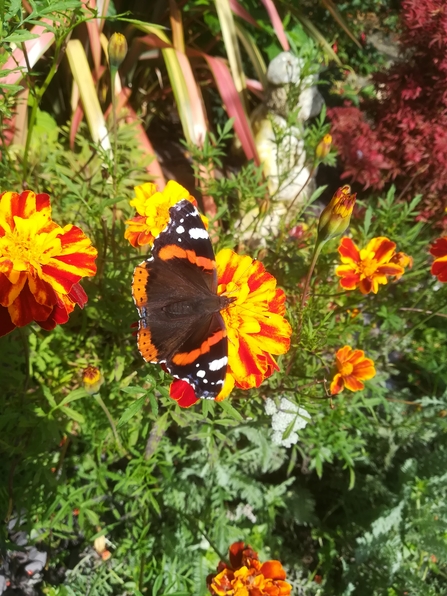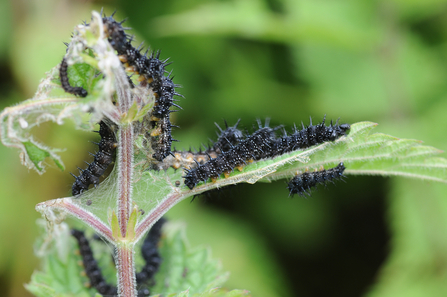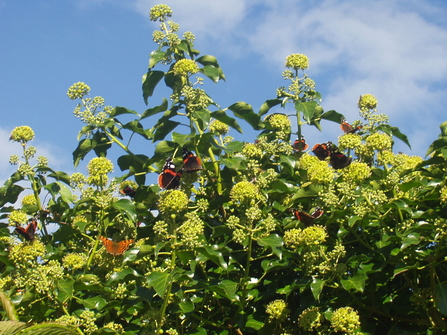
Red Admiral Butterfly in a colour border, Image by Rowena Millar
After dreaming up the title for this blog as a vague sort of pun, I found an article by David Chapman in Saga magazine online explaining that the name 'red admiral' is genuinely ‘a corruption of the original 18th-century name 'red admirable'’. This makes perfect sense to me, as the patterns of this butterfly brighten the mood and bring a bold splash of colour to any scene.
I was wondering yesterday, whilst watching a Red Admiral (Vanessa atalanta) in the garden, why people love butterflies so much, as opposed to most other insects. I went on to surmise that the way we use patterns, paints and dyes to create colourful clothes, flags and banners is connected to our appreciation of bird and butterfly wings.
The Red Admiral is particularly distinctive in red, white and black. If you look closely, you will see that the dark brown inner parts of the wings look as soft as velvet and are endearingly furry.
The underwings are beautiful in a slightly subtler way. Seen from the side, the top wing is partly black with a thick band of red splodges (not a technical term), and another band of white splodges above it, like the upperside. The two lower wings, however, look brown, delicately marbled with blacks, greys and perhaps hints of rich autumn colours. Seen very close up, they look like a patterned tapestry rug.
From September through to next summer
In September, you will find Red Admirals sipping the nectar of the last buddleia flowers, or feasting on late-summer garden plants such as sedums and Verbena bonariensis. Like the last of the wasps, these butterflies are partial to fruits, including apples and blackberries. I shall be leaving a couple of old pears out for them as well as windfalls and apple cores.
The largest garden Red Admiral gatherings I’ve seen have been along the top of our south-facing hedge, on clusters of ivy flowers in September/October – the abundant yellow-green pom-pom heads (or umbels) are generous providers of pollen and nectar.



